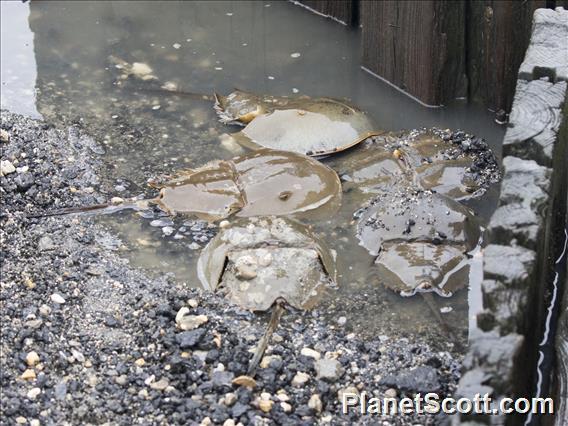Horseshoe Crab (Limulus polyphemus)

Horseshoe Crab (Limulus polyphemus)
×


Horseshoe Crab (Limulus polyphemus)
About Horseshoe Crab (Limulus polyphemus)
- Kingdom: Animals
- Phylum: Arthropods
- Class: Merostomate
- Order: Xiphosura
- Family: Limulidae
The Atlantic horseshoe crab, also known as the American horseshoe crab, is a species of horseshoe crab, a kind of marine and brackish chelicerate arthropod. It is found in the Gulf of Mexico and along the Atlantic coast of North America. The main area of annual migration is Delaware Bay along the South Jersey Delaware Bayshore.
Source: Wikipedia
Trips
No trip reports available.Visits
-
2007-06-14
Cape May National Wildlife Refuge - Deleware Bay, United States of America -
2023-05-20
Heislerville Wildlife Management Area, United States of America


